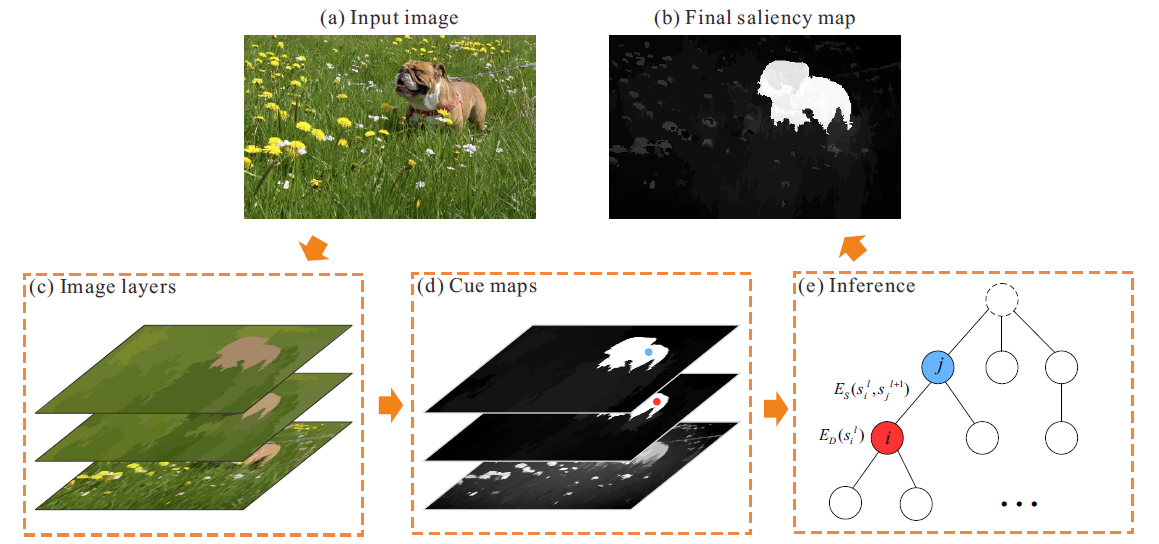
An overview of our hierarchical framework. We extract three image layers from the input, and then compute saliency cues from each of these layers. They are finally fed into a hierarchical model to get the final results.
Qiong Yan Li Xu Jianping Shi Jiaya Jia
The Chinese Univeristy of Hong Kong
 |
An overview of our hierarchical framework. We extract three image layers from the input, and then compute saliency cues from each of these layers. They are finally fed into a hierarchical model to get the final results. |
Abstract
When dealing with objects with complex structures, saliency detection confronts a critical problem – namely that detection accuracy could be adversely affected if salient foreground or background in an image contains small-scale high-contrast patterns. This issue is common in natural images and forms a fundamental challenge for prior methods. We tackle it from a scale point of view and propose a multi-layer approach to analyze saliency cues. The final saliency map is produced in a hierarchical model. Different from varying patch sizes or downsizing images, our scale-based region handling is by finding saliency values optimally in a tree model. Our approach improves saliency detection on many images that cannot be handled well traditionally. A new dataset is also constructed.
Results

All results of our method on MSRA-1000, CSSD and ECSSD.
Quantitative Comparison
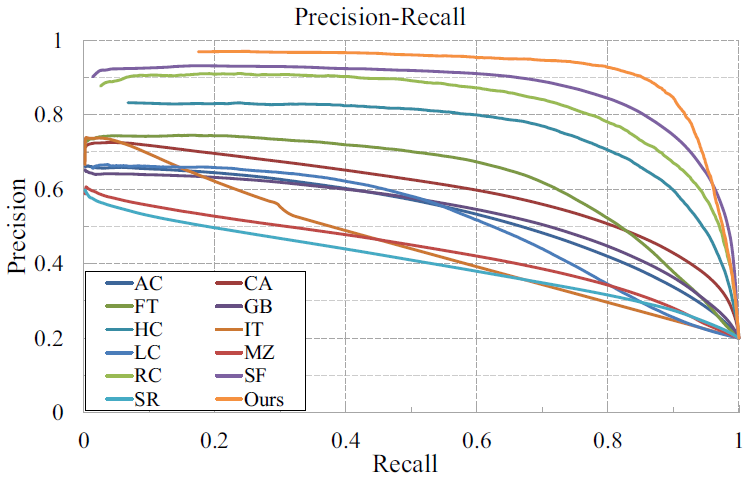 |
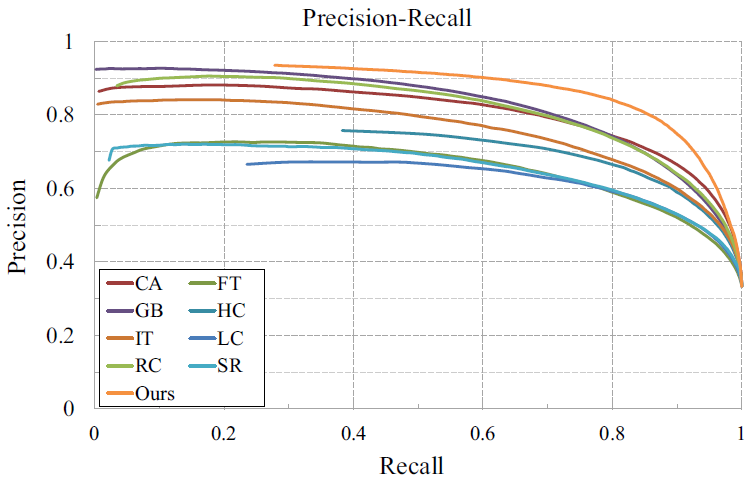 |
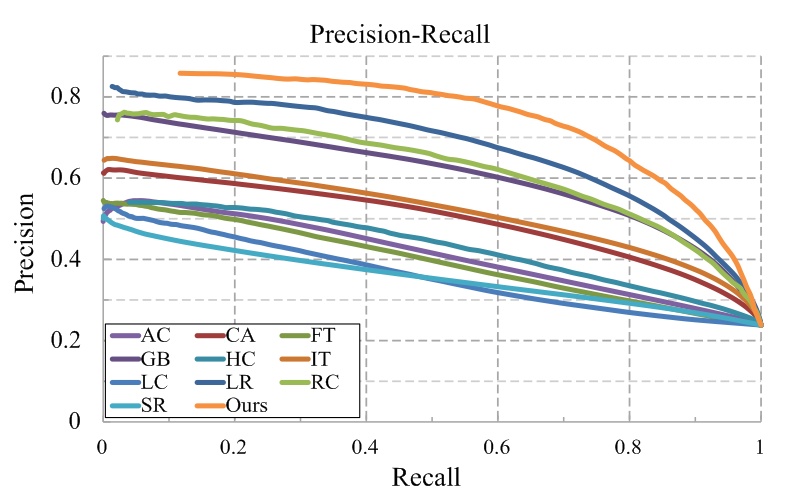 |
| MSRA-1000 | MSRA-5000 | ECSSD |
Precision-recall comparison with state-of-the-art method. For details on the abbreviations of methods please refer to our paper. Our method is the top orange curve.
Downloads
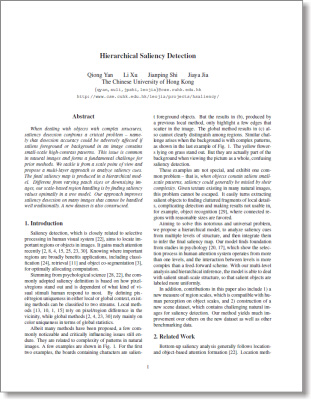 |
"Hierarchical Saliency Detection" Qiong Yan, Li Xu, Jianping Shi, Jiaya Jia IEEE Conference on Computer Vision and Pattern Recognition (CVPR), 2013 |
Other links
Last update: April 21, 2013